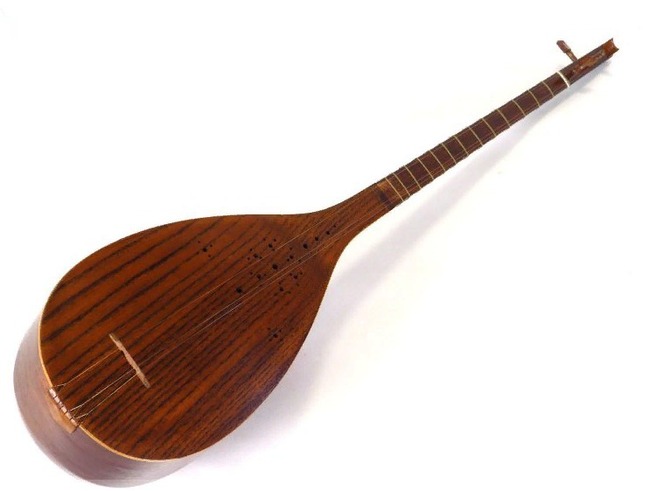
INSTRUMENTTar
Tar is an Iranian long-necked, waisted instrument, shared by many cultures and countries including Iran, Azerbaijan, Armenia, Georgia, and others near the Caucasus region. The word tār means “string” in Persian. It was invented in the 18th century and has since become one of the most important musical instruments in Iran and the Caucasus, particularly in Persian classical music, and the favoured instrument for radifs.
INSTRUMENTDutar
The dutar is a traditional long-necked two-stringed lute found in Iran and Central Asia. Its name comes from the Persian word for “two strings (from do, meaning “two” and tār, meaning “string”), although the Herati dutar of Afghanistan has fourteen strings. The Dutar is also an important instrument among the Kurds of Khorasan amongst whom Haj Ghorban Soleimani of Quchan was a noted virtuoso. In Kormanji one who plays the dutar is known as a bakci (bakhshi), while in Azeri the term is ashiq.


InstrumentSetar
The Setar (from seh, meaning “three” and tār, meaning “string”) is an Iranian musical instrument. It is a member of the lute family, which is played with the index finger of the right hand. Two and a half centuries ago, the fourth string was added to the setar which most of the time has the same tone as the bass string. It has 25–28 moveable frets which are usually made of animal intestines. They were made of silk in the past. The setar covers more than two and a half scales.
INSTRUMENTTanbur
The term Tanbur refers to various long-necked, string instruments originating in Mesopotamia, Southern or Central Asia. According to the New Grove Dictionary of Music and Musicians, “terminology presents a complicated situation. The term tanbur (or tambur) is applied to a variety of distinct and related long-necked string instruments used in art and folk traditions in Iran, India, Iraqi Kurdistan, Afghanistan, Turkey, Tajikestan, Kazakhstan, Uzbekistan. Similar or identical instruments are also known by other terms.”

Marcellus Clay tour

Pre-sale 20th June – Local Time
On sale 11am 2nd August
Pre-sale 00.01am Fri, 10th July
